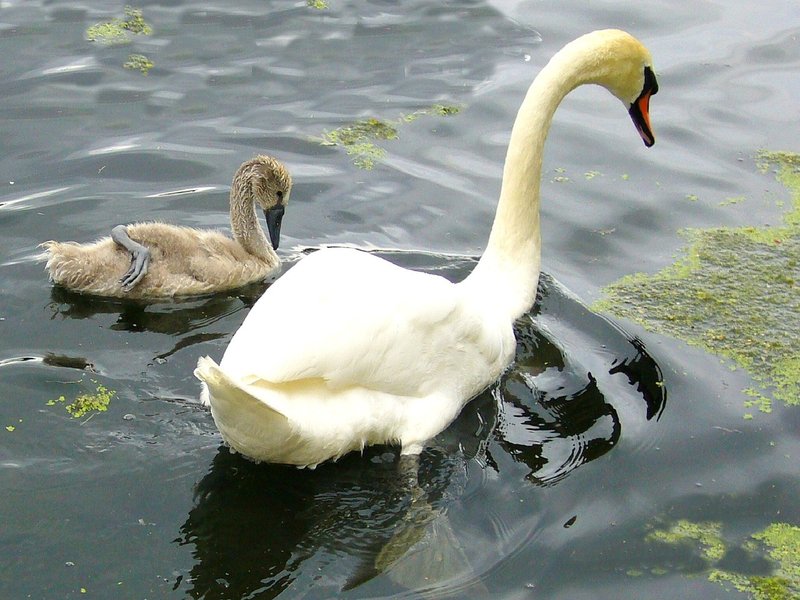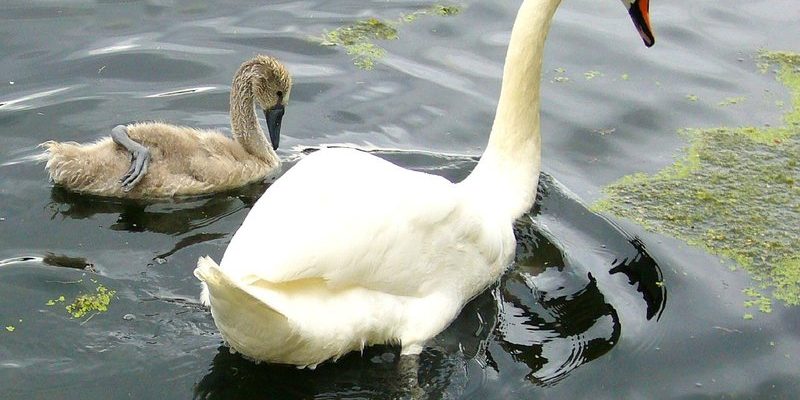
Swans are some of the most graceful birds you’ll ever encounter. With their long necks, elegant wings, and often strikingly white feathers, they truly look like they belong in a fairy tale. But there’s more to swans than just their beauty; they are fascinating creatures with interesting behaviors and lifestyles. In this article, we’ll dive deep into everything you need to know about these majestic birds, from their habitat to their remarkable behaviors.
You might be wondering, where do swans live? What do they eat? And how do they interact with their environment? Well, let’s explore these delightful questions and get a comprehensive understanding of swans, the graceful giants of the bird world.
Swans: An Overview
| Common Species: | Mute Swan, Trumpeter Swan, Tundra Swan |
| Habitat: | Wetlands, lakes, rivers, and ponds |
| Diet: | Herbivorous—mainly aquatic plants, grasses, and grains |
| Size: | Length: 4.5 to 6.5 feet; Wingspan: 6 to 10 feet |
| Lifespan: | 15 to 20 years in the wild |
| Speed: | Up to 20 miles per hour in flight |
Physical Characteristics
Swans are renowned for their impressive size and striking appearance. Most swan species are large birds, often measuring anywhere from 4.5 to 6.5 feet in length. One of the most iconic features of swans is their long, graceful necks. These necks are not just for show; they help swans reach food in the water and communicate with each other through a variety of vocalizations.
Their feathers are typically white, which provides an enchanting view as they glide across the water. Some species, like the Black Swan, have dark feathers with a contrasting white beak, showcasing how diverse these beautiful birds can be. Swans also have strong, webbed feet that help them swim efficiently and maintain stability when walking on land. This combination of features makes them perfectly adapted to their habitats.
Male and female swans, known as cob and pen respectively, often appear quite similar in appearance, but males are generally larger than females. During the breeding season, they can display additional courtship behaviors that make their beauty even more captivating. These behaviors, like synchronized swimming, are not just for attraction; they also help strengthen their pair bonds, reflecting their monogamous nature.
Behavioral Traits
Swans are not just pretty faces; they have fascinating behaviors that highlight their social nature. These birds are known for forming lifelong pair bonds with their mates, which is a rarity in the animal kingdom. When a swan finds its partner, they engage in various courtship displays, including head bobbing and synchronized swimming, which helps to solidify their relationship.
Once bonded, swans work together in raising their young, known as cygnets. The parents are very protective, often taking turns tending to their offspring. You might find them herding their young around the water, keeping a watchful eye for potential threats. Swans can be quite territorial, particularly during nesting season, which shows just how dedicated they are to their families.
In addition to their parenting skills, swans also communicate in a variety of ways. They produce a range of sounds, from trumpeting calls to soft honks. These vocalizations play a critical role in their social interactions, helping them maintain their bond with mates and warn off intruders. Watching their interactions can give you insight into their complex social structures.
Habitat and Distribution
Swans are found across many parts of the world, with their habitats primarily centered around freshwater environments. They thrive in wetlands, lakes, rivers, and ponds where they can access their main food sources: aquatic plants. This preference for freshwater bodies means that you can often spot them in parks, nature reserves, and even at some golf courses where water features are available.
While you might think swans are limited to specific regions, they actually have quite the range. For example, Mute Swans are commonly found in Europe and North America, while Trumpeter Swans predominantly reside in North America. Their adaptability to various environments showcases their resourcefulness as a species.
However, despite their adaptability, swans face various threats in the wild. Habitat destruction, pollution, and hunting can have significant impacts on their populations. Conservation efforts are vital to ensure that these beautiful birds can continue to thrive in their natural habitats. Many organizations work tirelessly to protect wetland environments, emphasizing the importance of maintaining biodiversity.
Diet and Feeding Habits
Swans are primarily herbivores, and their diet mainly consists of aquatic plants, grasses, and some grains. Their long necks are specially designed for foraging. They can reach underwater to pull up plants or find food along the water’s edge. This unique feeding habit allows them to access a variety of food sources that other birds might miss.
You might be surprised to learn that swans can also consume small fish and invertebrates, especially if plant food is scarce. This omnivorous tendency is a helpful adaptation that ensures they can survive in different environmental conditions. When foraging, swans often display an interesting behavior called “tipping,” where they tip their bodies forward to reach submerged plants while keeping their tails above the water. It’s a sight that surely adds to their allure!
Interestingly, swans also participate in social feeding behaviors. They often feed in groups, which not only helps them find food more efficiently but also provides safety in numbers. Their cooperative nature extends to their feeding habits, making it a fascinating aspect of their everyday lives.
Reproduction and Lifespan
The mating season for swans usually begins in the spring when temperatures rise and food becomes more abundant. This time of year often brings beautiful courtship displays, where swans perform synchronized swimming and intricate movements to attract their partners. Once a couple forms a bond, they remain together for life, making swans symbols of fidelity and love in many cultures.
Swans typically build their nests on the water’s edge, using reeds and other plant materials to create a cozy home for their cygnets. A single clutch usually contains around 5 to 7 eggs, although this can vary depending on the species and environmental conditions. After about 35 days of incubation, the cygnets hatch, and it’s a heartwarming sight to see them following their parents closely as they learn to swim and forage.
In the wild, swans can live for about 15 to 20 years. However, those in protected environments or under human care can sometimes reach even greater ages. Factors such as predation, habitat quality, and food availability play crucial roles in determining their lifespan. Ensuring swan habitats are preserved and protected can help boost their chances of long-term survival.
Conservation Status
Many species of swans are stable, but some face challenges that threaten their populations. Issues like habitat loss, climate change, and pollution pose significant risks to their survival. Mute Swans, for example, have been introduced to various areas outside their native range and have become invasive in some regions, leading to management concerns.
Conservation efforts are essential to maintain healthy swan populations and the ecosystems they inhabit. Organizations worldwide work to create protected areas, restore wetlands, and raise awareness about the importance of these magnificent birds. Participating in local conservation projects can be a meaningful way for you to contribute to protecting swans and their habitats.
Community involvement is a key aspect of swan conservation. Educational programs aimed at schools and local communities can help raise awareness about the importance of biodiversity and the need for conservation. By fostering a connection between people and nature, we can inspire future generations to care for these beautiful birds and the environments they call home.
FAQ
What is the difference between a male and female swan?
Males, called cobs, and females, called pens, can look quite similar. However, males are generally larger and may have thicker necks compared to females. During mating season, males often display more pronounced courtship behaviors, like head bobbing and swimming in patterns to attract their mates. Their size difference can also be noticeable when they are together but is not always easy to distinguish at first glance.
Are swans friendly to humans?
Swans are generally not aggressive towards humans unless they feel threatened, especially during nesting seasons when they are particularly protective of their young. While they may appear calm and inviting, it’s essential to keep a safe distance and not approach or feed them, as this can lead to stress for the birds and possible aggression.
How do swans communicate?
Swans have a diverse range of vocalizations, including honks, trumpets, and soft grunts. Each sound serves a specific purpose, from attracting a mate to warning off intruders. Additionally, they use body language, such as head bobbing and posturing, to communicate with one another, especially during mating rituals and when around their young.
Can swans fly?
Yes, swans are strong fliers. They have large wingspans and can reach speeds of up to 20 miles per hour when flying. They typically fly in a V-formation, which helps them conserve energy during long migratory flights. Their ability to fly also allows them to escape potential threats and seek out new habitats when necessary.
What do swans eat in the wild?
Swans primarily eat aquatic plants, grasses, and occasionally grains. They forage underwater for plant roots and leaves, but they can also consume small invertebrates and fish if necessary. This varied diet helps them adapt to different conditions and ensures that they can thrive in their habitats.
Where do swans typically live?
Swans live in a variety of freshwater environments, including lakes, rivers, ponds, and wetlands. They prefer areas with abundant aquatic vegetation, which provides them with food and shelter. Their habitats can be found in many regions worldwide, although certain species have specific geographical ranges.
Do swans migrate?
Some swan species are migratory, while others are resident birds that stay in the same area year-round. Species like the Tundra Swan migrate seasonally between breeding and wintering grounds, while Mute Swans often remain in their habitats if the conditions are favorable. Migration patterns can vary based on environmental factors such as food availability and weather conditions.
How long do cygnets stay with their parents?
Cygnets typically stay with their parents for about 6 to 12 months, depending on the species and environmental conditions. During this time, they learn essential survival skills, including foraging for food and navigating their habitats. Once they become independent, they may form groups with other young swans before eventually leaving their family unit.
Are swans endangered?
Most swan species are not considered endangered, but some may face challenges due to habitat loss, pollution, and other environmental threats. Conservation efforts are crucial to maintaining healthy swan populations. Invasive species like the Mute Swan can also complicate local ecosystems, leading to management concerns in some areas.

